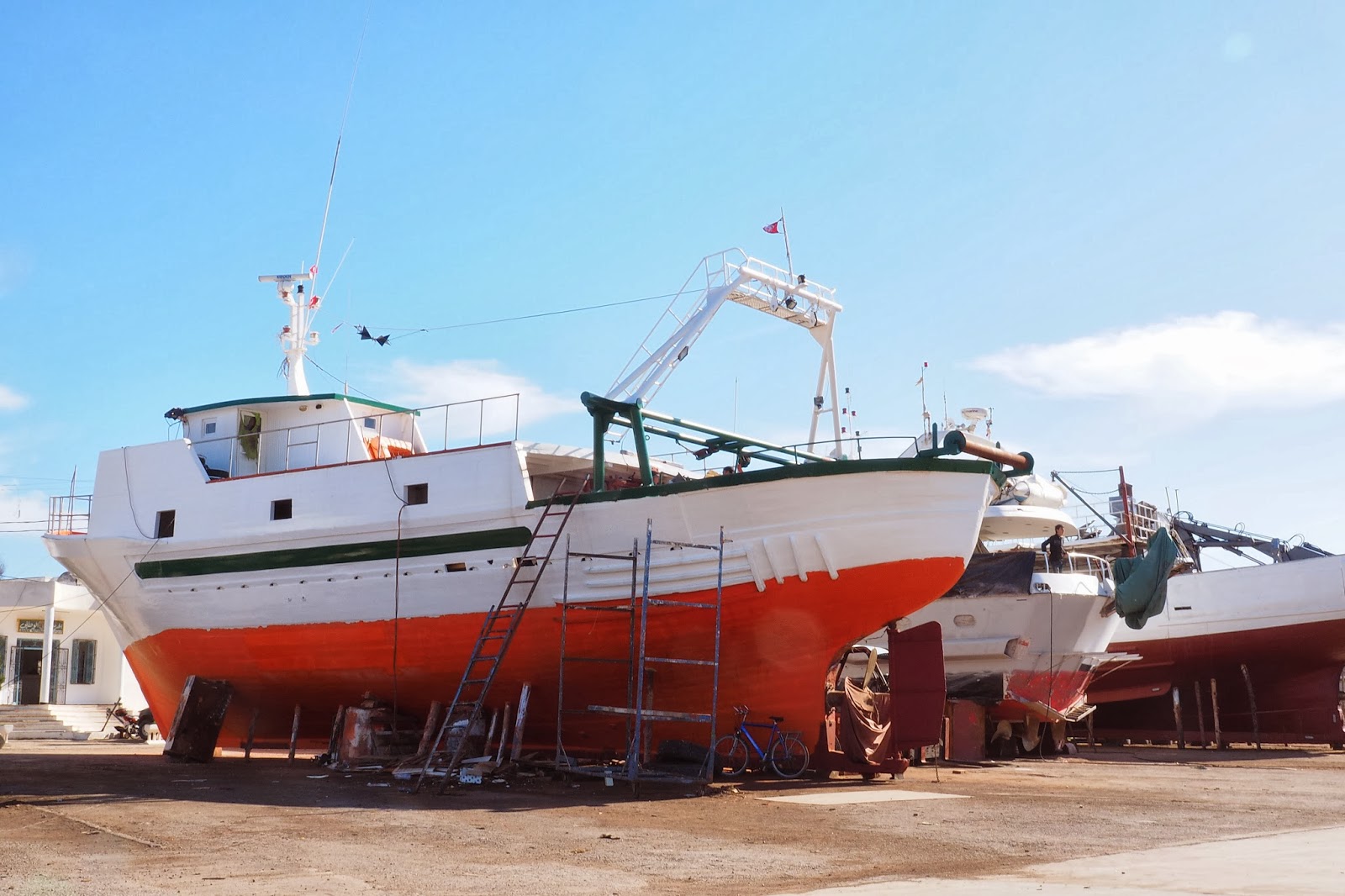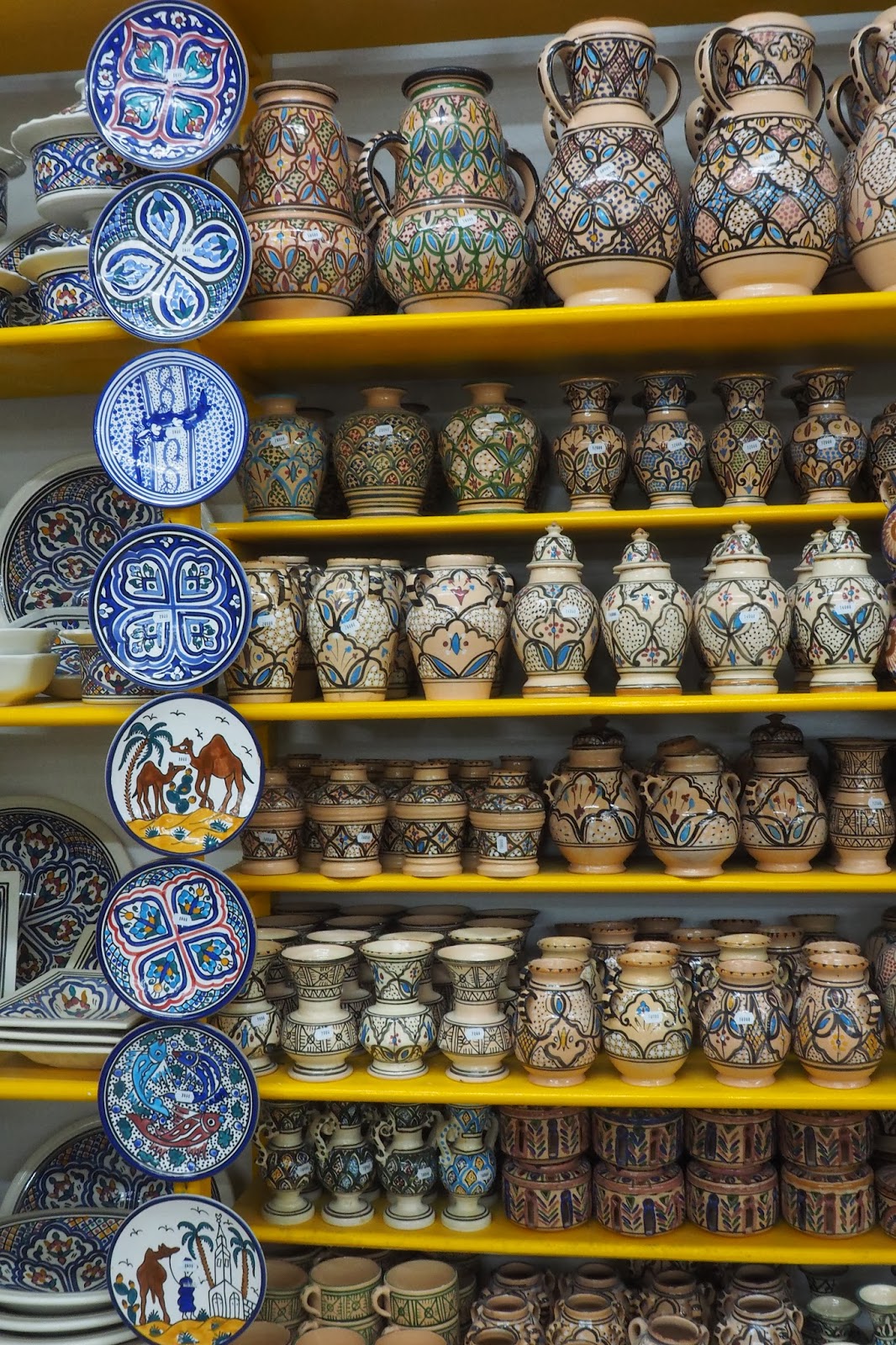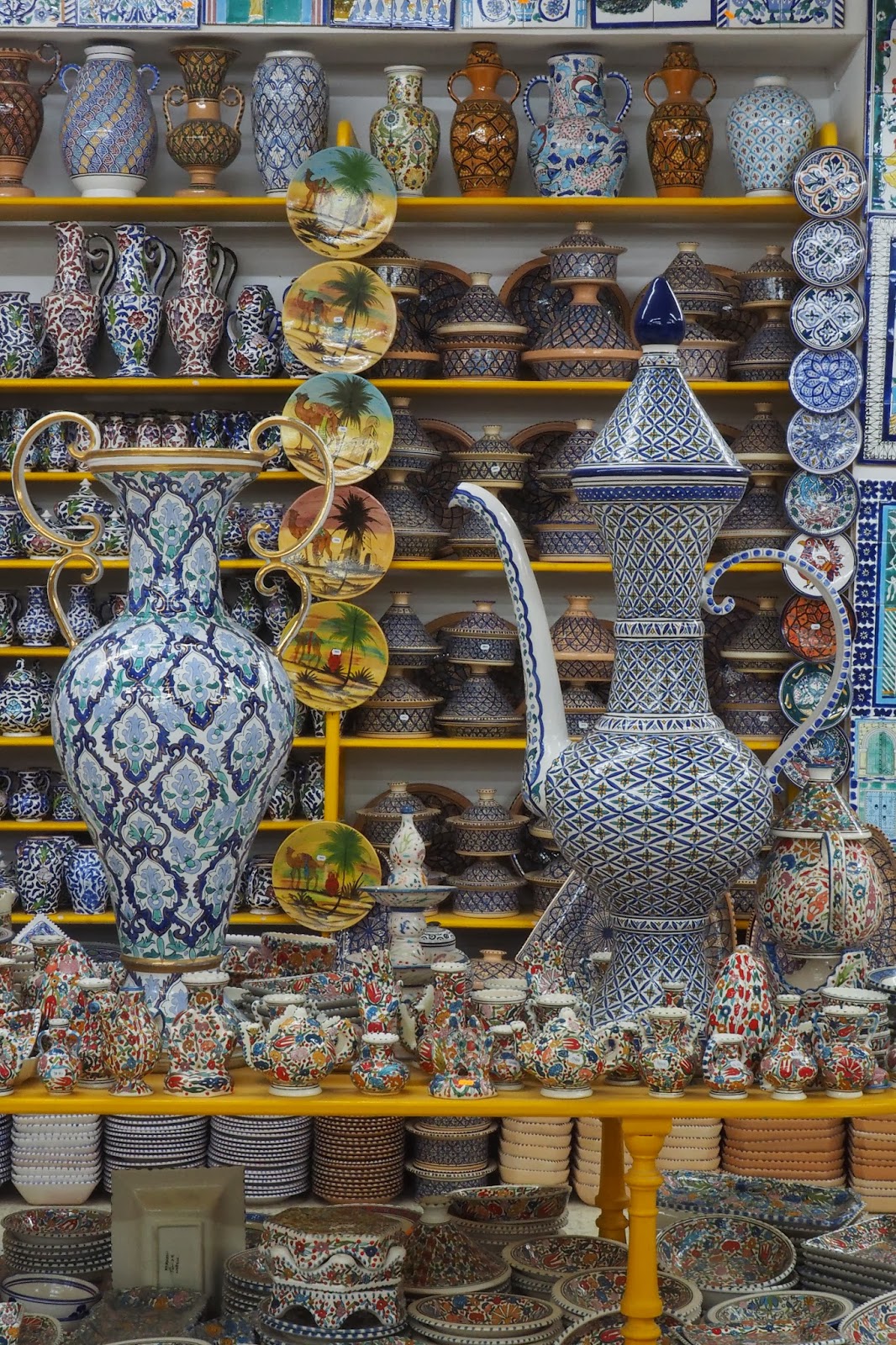Cont'd
There was a slight change of tour itinerary the day we went to Sousse, such that instead of going there first, we we were taken to first to Kelibia, and then to Kerkouane and only then to Sousse. It didn't matter much but I have never been to any of those places. Kelibia used to be a fortified sea port with a fortress on the hill guarding the harbor . However, we weren't
given any time to go up there.
This is the famous fortress overlooking the Kelibia harbor. It had just been renovated. But we did not have time to visit it.
Another view of the great fortress
A view of the harbor.
The space close to the quayside seems to have been turned into some free public space for the maintenance and repairs of small crafts
How deep is the keel of this apparently short boat!
The boats being repaired are painted in such gay colors
Another boat due for a new coat of paint
This seems to be painted the same way. Done by the same company?
So clever of them to just use poles of different length to prop the boat up for work
A similar boat is already in the water
An old sailor waiting for work
a boat full of folded up nets
I wonder what that big blue barrel on the blue boat is supposed to be used for.
pulled in and folded nets are just lumped together indifferently close to the shore
Quite a number of speed boats are moored there
Some gears for lifting the boats out from the water at the end of the quayside
Closer view of the winches

The place is lined with boats
None of the mooring spaces appear to have been wasted

The low clouds look really far away
Trawlers each with a crane at the back and their nets and tackles are moored to the side of the pier in close succession.
It appears to be a really busy harbor
The sea is so blue. It was such a beautiful day. But we didn't have any time for a water tour or go up there to look at the harbor from the fortress. Nor were we given a chance to try its famous white wine.
This is the site we next visited. It closes at 4 p.m. So we got to be there earlier
The space before the ticketing office. According to the information here, this site is at the extremity of Cap Bon northest of Tunis between Kelibia and Aspis where the Roman built into the Clipea and the Promontorium Mercurrii( present day the Ras Ed Drek). Nobody knows exactly why this place is thus called. Some suggested that it was called Tamerzrat, which means simply" the remains of ruins". During the Punic Wars, this Carthaginian city suffered two major destruction by the Romans, the first time in 310 BCE and the second in 266-265 BCE. The oldest part of this ruin dates back to 6th century BCE and its present conditions resembled those existing in 3rd century BCE. It's an excellent example of how the Carthaginians built their city: tt follows a grid system with the streets intersecting with each other at right angles, with spaces for public square. It is estimated that about 2000 people lived here with each house accomodating 6-7 persons including servants. This place was once a thriving den of activities by fishermen, potters, sculptors, metal smiths, stone cutters, masons, weavers and dyers.
Some of the artifacts recovered here: terra cotta dog and pot
This is the plan of the former city
We entered the site through this garden path

The end of the path
Some of the flowers in the garden

More flowers

This is the road with two plazas
This house on the artisans' street used to be a house with a central
courtyard and two benches flanking an altar for domestic worship. The hole is presumably a sewer entry point.
There are many stone bath tubs in the houses here. This is one of them
This is presumably a cistern for holding drinking water
The remains of some of the houses
This is the plan of the house with a central courtyard
This is the sewer
One can see that the houses are built one next to the other
This is presumably a public bath
The embankment to the settlement
A house close by the sea
The path leading to the row of houses by the sea
Same path looking in the opposite direction
Further down the same path
The houses at the end of the path
A bath tub with mosaic floor
A bathtub and a sump
A public building
The sea wall
The steps leading down to the sea
Waves coming in from the sea
a view of the houses a little further from the coast
This is presumably a fountain
looking out from towards the sea
The perpendicular road
An opening for emptying dirty water
a bathtub
The bathturb and the sump
Another bathtub
A similar bath tub
a very deep sump?
Underground drain
A basin?
a bathtub for a small baby?
Some of the houses by the sea
This is believed to be the place where tables are placed for goods on sale?
A peculiar plant with ring-shape tendrils I found at the site
The coastal path back to the town square
shrubs by the sea
Tree slanted by the constant sea winds
We're on our way again after the visit. We'd be going to Nabeul.
The land is much greener here
they're growing something other than palm dates
A vegetable patch
Land is not a problem in Tunisia at all. You can have as much land as you want at very reasonable prices. This is a car washing service station.
A new housing estate
Tunisian appear to love curves
A rarely seen geometrical minimalist structure

A beautiful blue and white minaret
A monument to the orange in the middle of the main road of the town
Only in Nabeul, would you find such a big potted tree! Nabeul is a small town founded by the Phoenicians in the 5th century BCE famous for its pottery.
Many of its houses here too use locally made wall tiles to give themselves a distinctive look.
The entrance to the old town.
We were taken to one of the local pottery shops
colorful lamp shade for walls
All kinds of vases, pots, bowls, dishes
and wall tiles
Greek pitchers
Arabic perforated pots
dishes with intricate floral motifs
in blue, red, yellow, green
Decorative wall tiles
lamp shades
Small dishes
huge pot
Flower pots
jugs
Flower pots
cups and saucers and even fruit basket
Cooking pots
And the palm of protection
A master shows us how he makes the mould for firing

A dish
a pot
He adds an ear
he uses a small scraping and shaping board on a turning mill
makes some quick cuts and smooths the surface with his fingers and the small board
Two of items he made right in front of our eyes
Another master is checking his production
A third master is doing his bowls
a fourth is painting the: how concentrated he looks!
Their crafts is not confined to household pottery, building pottery too.
Everything is lumped together
Everything is done here: design, manufacture, storage and sale: a one stop shop!
A very Tunisian design
Shop specializing on producing decorative items for gardens
Some of the shops here profit from the beautiful wall tiles they make here on their external walls
They also produce big decorative plates here too
The shop opposite to where we would be picked by our coach with its elaborate shop front design
There are many hawkers in Tunisia
They sell all kinds of stuffs: cheap jewellery, smoking pipes etc
A news stand and fast food shop: should they be mutually exclusive?
Whether it's one or the other, the sight of these roast chicken reminds me that it's dinner time.
























































































































沒有留言:
張貼留言